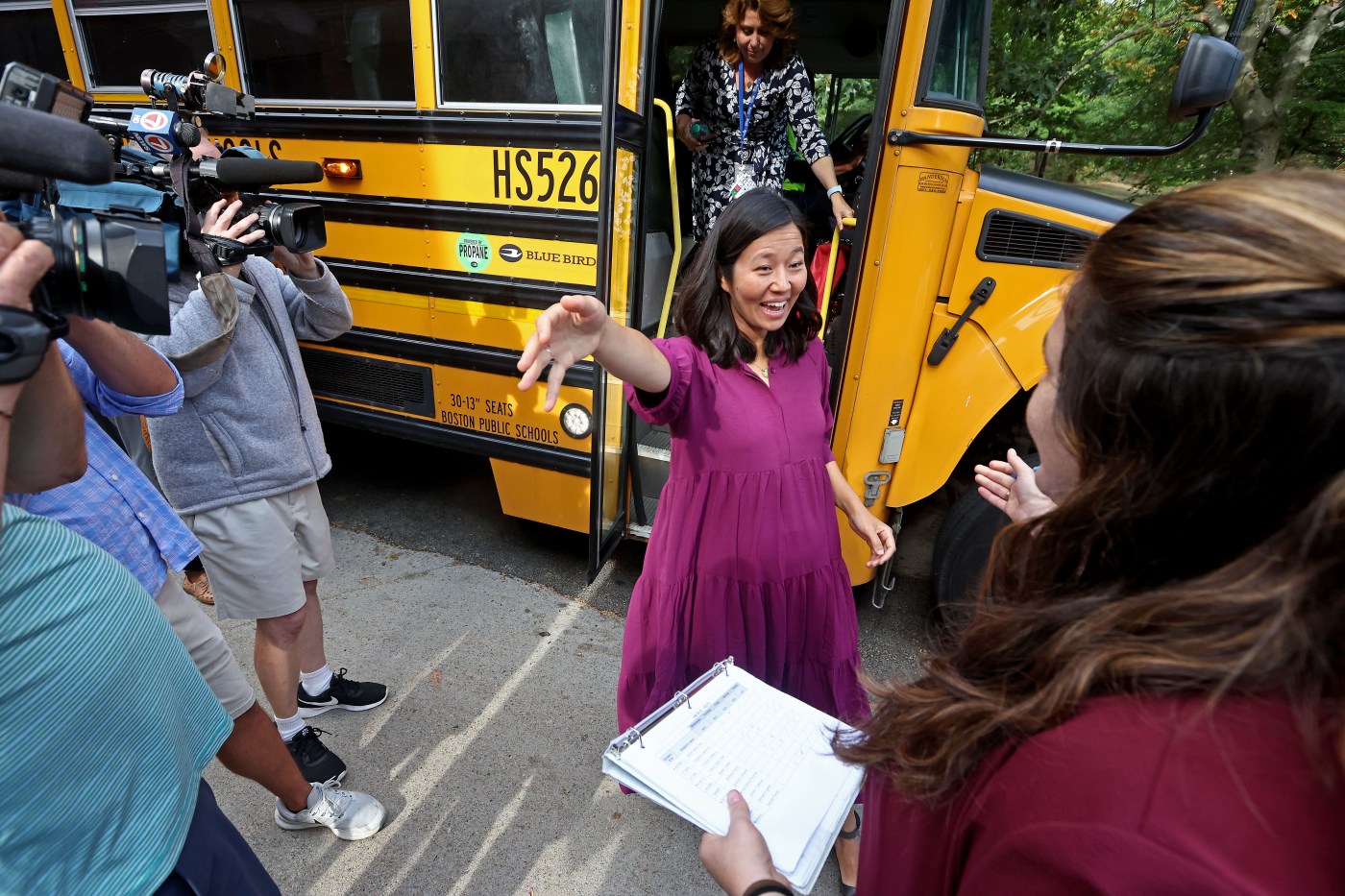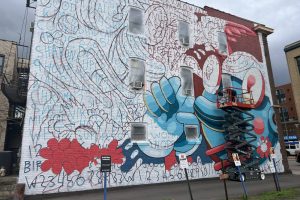
Michelle Wu, BPS superintendent join students on bus amid ‘unacceptable’ transportation delays
BPS Superintendent Mary Skipper and Mayor Michelle Wu hopped on a school bus Wednesday morning — observing the students’ everyday transportation challenge as the bus rolled into the Higginson/Lewis K-8 School six minutes past the first bell.
“We really wanted to see how the routing would make a difference,” Wu said outside the school, referencing the first round of route updates made to alleviate issues Tuesday night. “And so compared to how it’s been doing today, we arrived six minutes after school start time, which is an improvement from how it’s been. And obviously we’re going to keep pushing.”
BPS families were hit with a mountain of bus delays and issues this year, which district leadership has said is due to a “learning curve” with new GPS technology and unprecedently high last-minute enrollment and route changes.
BPS is using the app Zum this year to allow families to track buses and receive notifications, and district officials to gather data to inform routes.
Wu and Skipper took an especially problematic bus route to the Higginson/Lewis, checking in on updates made to the route Tuesday night based on data collected during the first full week of the new GPS system. The district will continue updating routes weekly on Tuesdays to adjust for traffic patterns and other factors.
The bus was the school’s latest to arrive Wednesday, but had been arriving an average of 15 to 20 minutes late.
The mayor and superintendent’s chosen bus route went to Boston Latin Academy and the Eliot School before the Higginson/Lewis, and saw updates in the early legs of the trip. It made it on time to BLA before getting caught in the North End traffic and showing up to the Eliot 18 minutes late. It was scheduled to arrive at the Higginson/Lewis at 9:15 a.m., 15 minutes before the bell, but got in at 9:36 a.m.
District officials said bus on-time performance has increased “steadily” over the first weeks of school — with over 90% of buses coming in within 15 minutes late this week, according to the superintendent. But criticism has remained strong.
“While it’s encouraging that the on-time arrival rate is improving as we approach the tenth day of
school, it remains far below what families should expect,” City Councilors Erin Murphy and Ed Flynn wrote in a letter to Skipper on Wednesday. “Many have lost trust in the reliability of the school bus system and are seeking alternative transportation to ensure their children arrive at school safely and on time. This situation is unacceptable.”
The councilors said they “look forward” to the upcoming city council hearing on the issue and called for BPS to provide transparency about the state of the bus system and an “immediate action plan.”
The MassGOP also chimed in Wednesday, saying the delays are “absolutely unacceptable.”
“There is no excuse for bus delays, especially after an entire summer to prepare for this fundamental responsibility of the school system,” said MassGOP Chair Amy Carnevale.
Wu cited a couple of her biggest take-aways from the bus trip Wednesday, including the importance of the Zum feature allowing parents to notify drivers on days their children will not take the bus. Though 11 students were scheduled for pick-up on the bus that officials rode Wednesday, only five ended up riding and the bus took time to stop for each of the 11.
Related Articles
‘Major update’ to Boston bus routes on the way as on-time woes continue
Advocates warn proposal altering information sharing between BPS schools and police may lead to lawsuits
Boston School Committee signs off on White Stadium redevelopment negotiations over community protest
Boston city councilors press for state intervention after ‘dismal’ BPS bus transportation delays
Wu addresses BPS parents’ bus frustration: ‘Major challenges are being addressed’
The mayor also said she learned that complicated details prevent the district from simply adjusting start times earlier for the first school stop or “wave.”
“In order to move the last wave by, let’s say, 10 minutes, the first wave would have to move by a lot more than 10 minutes, and then we’re asking certain teachers who teach at certain schools in the first wave to come a lot earlier than others,” said Wu. “Contractually, and just out of fairness and respect for our teachers’ schedules, we’re really bound by some of those considerations, and so it ends up coming down to the details that we can manage within these routes.”


